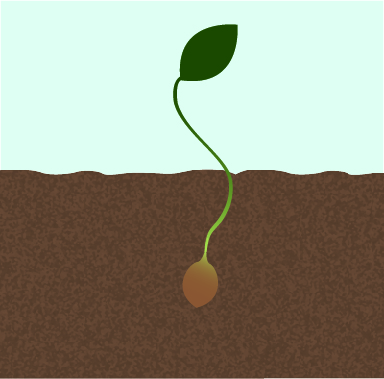Homeowners, landscapers and farmers spend a lot of time using aerators to break up compacted soil. However, there are cases when soil can actually be too loose. This causes a different set of problems, which include poor seed growth and cracking foundations. Fortunately, items that you likely have on hand, like a garden hose, can be used to firm up dirt.
Why Would I Need to Compact Soil?

There are several reasons that you might find yourself needing to compact your soil. First, loose soil won’t deliver the seed-to-soil contact needed for fast germination, reducing yields. This is a major problem in gardens with freshly tilled soil. If you compact soil with water, you can increase this contact without making the surface too hard for the new plant to break through.
Foundational support is another factor that might require you to compact your soil. If you’re putting anything on top of the ground, you need to compact the soil to create a solid foundation. This includes pavers and support blocks for patios.
In some climates, massive differences between winter and summer precipitation can cause the soil to expand and shrink throughout the year. Irrigating in the summer helps the soil maintain and regain its structure, preventing foundation damage. This shrinkage usually appears as a separation between the soil and exterior walls.

How Does Water Compaction Work?
Have you ever seen a cereal box with the label “Contents May Settle After Shipping”? When the bag is filled at the factory, the cereal pieces don’t perfectly align, creating air gaps. As the package bounces around in the back of a truck, the contents shift, falling into place and leaving a large air space at the top of the bag.
Soaking soil has the same effect that vibrations have on cereal. Water acts as both a lubricant and a carrier of dirt particles. As this water drains from the soil, gravity pulls these loose particles downward, filling in air gaps.
Will My Soil Be Compacted After a Heavy Rain?
The force of raindrops mechanically compacts surface dirt, creating a soil crust that is up to ½-inch deep. This layer impedes drainage and makes it hard for seedlings to emerge from soil. By applying low-pressure water near the ground’s surface, the soil compacts evenly. If you compact garden soil with water this way, you can increase soil density without creating a hard top layer.
Water Vs. Mechanical Compaction Methods
Soil can be mechanically compacted by applying force with a roller, hoe or rammer.
A roller looks like a drum aerator, minus the spikes. Pulling this weighted metal drum over the lawn crushes the soil. In a pinch, a heavily loaded wheelbarrow can do the same job.
A flat hoe is handy for localized compaction. By slamming the flat side of the blade into the ground, you can compact dirt close to the surface. This method is usually used to support newly planted saplings.
A rammer looks like a jackhammer with a flat base. The vibrating base shakes the dirt beneath, causing it to settle. These heavy-duty machines are usually reserved for major construction projects, like forming building foundations and pouring driveways.
There’s one thing in common with these three methods: They’re all brute-force methods that compact surface soil. Using water doesn’t create a hard pan on the surface, and since it’s slower, it’s easier to get the perfect density for your project. While each mechanical method has its uses, for most compaction jobs, it’s safer and easier to use water.
How to Pack Down Dirt with Hose Attachments
Using low-pressure water soaks the ground without eroding surface soil or creating hard pan on the surface. There are three tools that let you get this low-pressure flow from your outdoor spigots:


If you already have soaker hoses lining your garden plot for irrigation, you can use them for compaction.
No matter which tool you choose, application remains the same. Gently soak the soil until water is pooling on the surface (see example below). Give the soil at least an hour to absorb the water before repeating.
How much water you’ll need and how long it takes between waterings will depend on the makeup of your soil. Clay soils are less porous from the start and drain slowly. Sandy soils are packed with open spaces, draining quickly and requiring more work to compact.
To test the soil, use a trowel to dig about 6 inches deep. Pull out the soil and crush some in your hand. If you get a ball that holds together and doesn’t leak water, the soil has the perfect amount of moisture and compaction. A crumbling ball indicates a need for more water. If the ball drips water, the soil needs more time to drain.
How to Compact Soil for Foundation Repair
To compact the soil around a structure, lay out soaker hose 1 to 1-1/2 feet from building walls. For the best performance, limit water pressure to 25 psi. You may need to install a pressure limiter on your faucet. Water the ground for 10 to 15 minutes two to three times per day. If the soil is already pulling away from outer walls, you may need more frequent treatments to fill in the gaps. Remember to let the soil drain between treatments. Going all-in on water can wash away dirt, undermining its structure under your foundation.
All content provided in this article is for general informational purposes only. All use of products referenced in this article should be done in accordance with the manufacturer’s instructions.
For more information on soil preparation, read the following articles:
How to Add Nitrogen to Garden Soil
How to Reduce Acidity in Your Garden Soil





